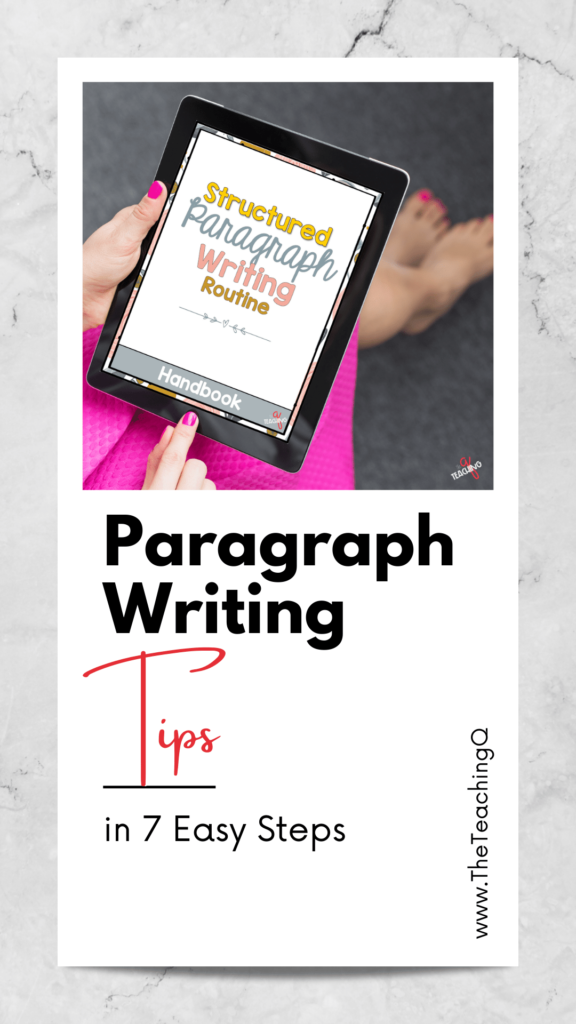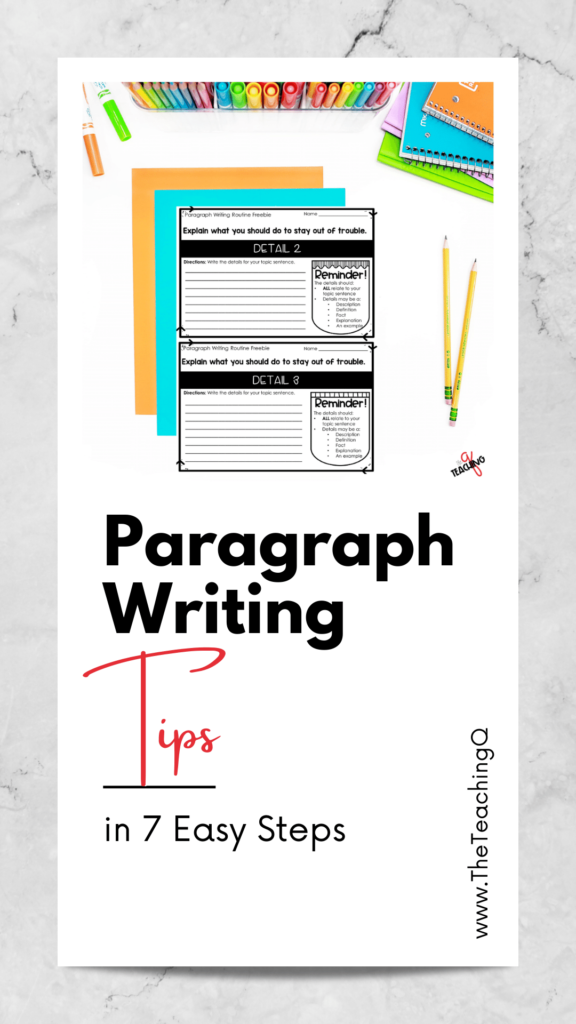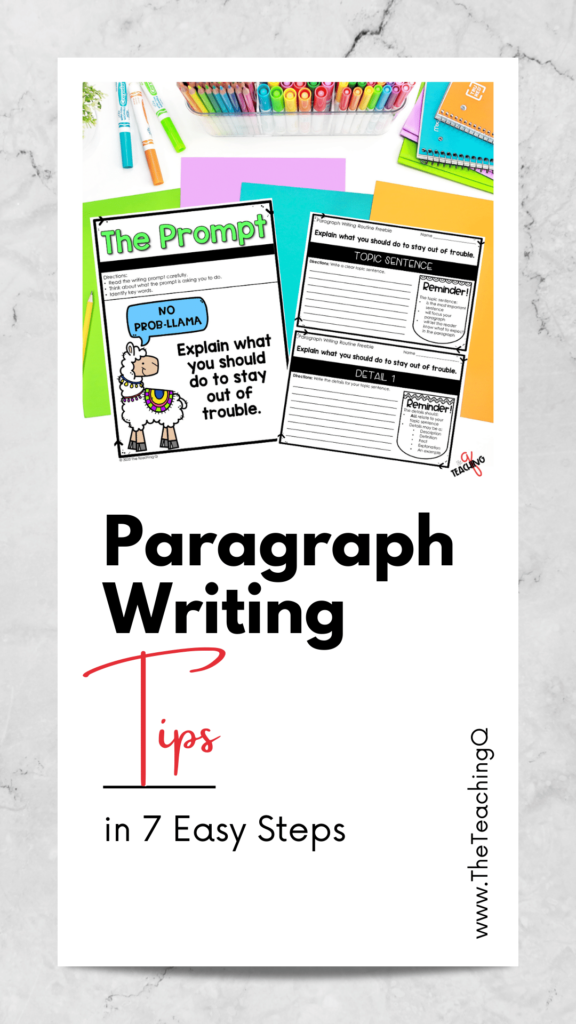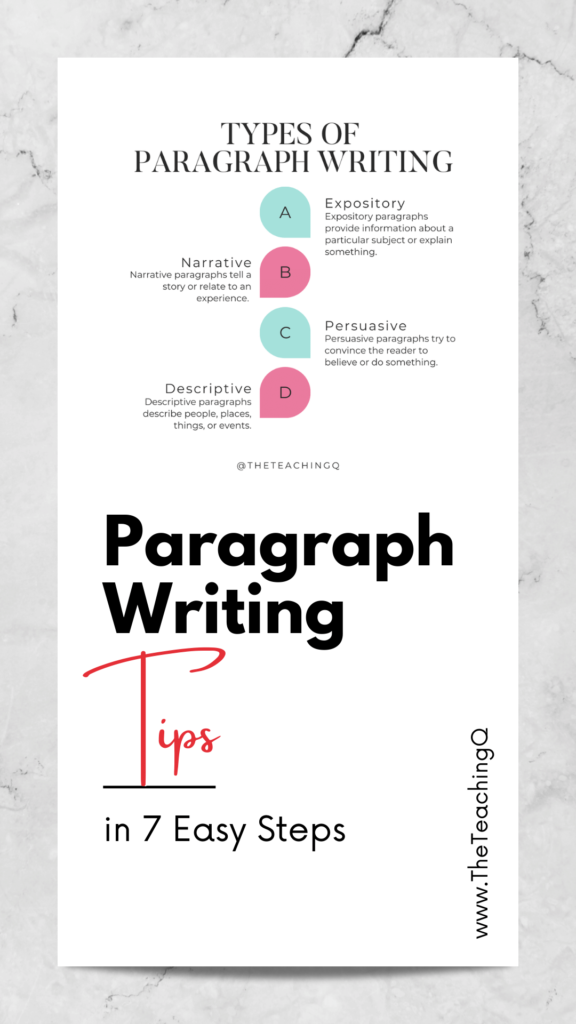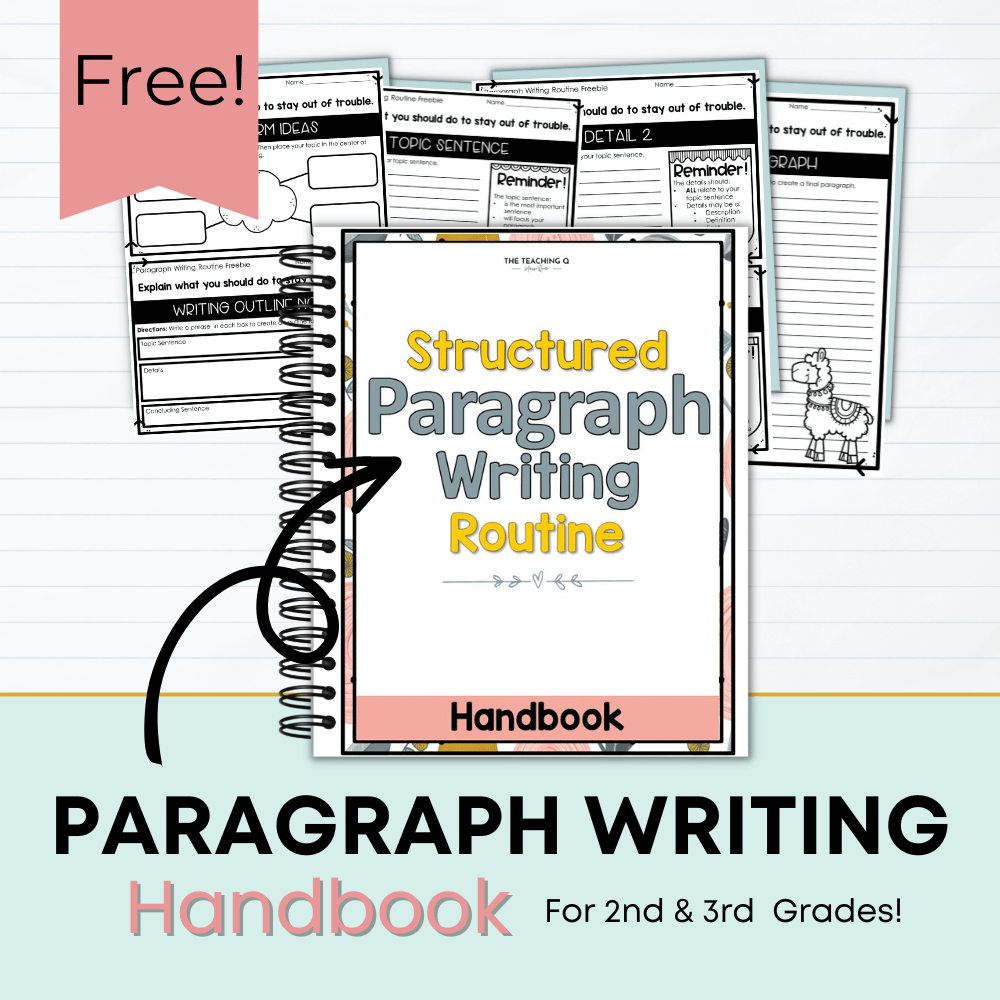Are you in need of paragraph writing tips? Oh, the joys of teaching paragraph writing! There’s nothing quite like watching your students’ eyes glaze over as you discuss topic sentences, main ideas, and supporting details. But there’s no need to despair! Teaching paragraph writing doesn’t have to be agonizing. In fact, with a few simple paragraph writing tips, you can turn your students into paragraph-writing pros in no time.
Step 1: Introduce the concept of a paragraph.
Before you can start teaching your students how to write a paragraph, they need to have a basic understanding of what a paragraph is. A paragraph is a group of related sentences that focus on a single main idea. Just as sentences are grouped together in paragraphs, paragraphs are grouped together in essays.
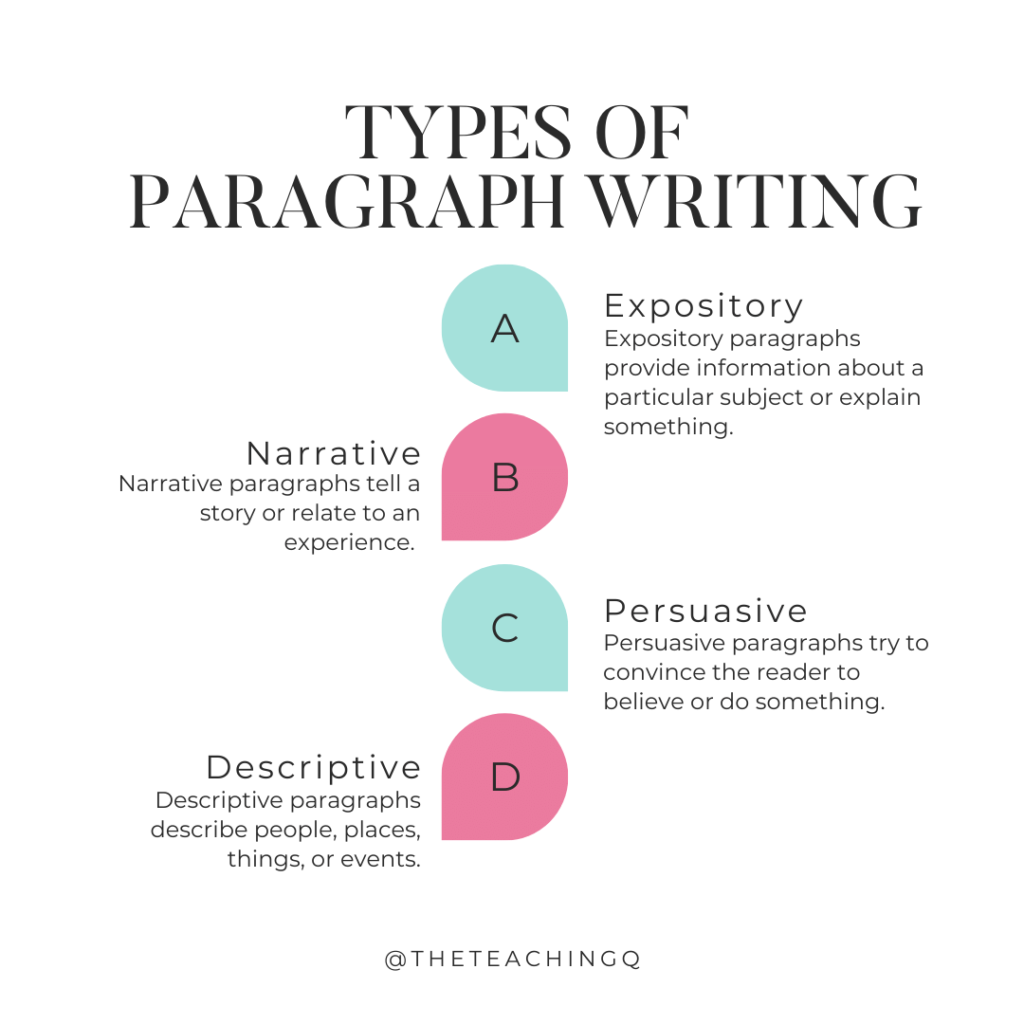
Step 2: Discuss the different types of paragraphs.
There are four different types of paragraphs that you can teach your students: expository, narrative, persuasive (opinion), and descriptive.
Expository Paragraphs
Expository paragraphs provide information about a particular subject or explain something. They are often used in nonfiction texts, such as newspapers and textbooks, to deliver facts and introduce new concepts. When teaching expository paragraphs, provide students with a framework—such as a graphic organizer—that they can use to organize their thoughts. Encourage students to use specific and concrete evidence from the text to support their points.
Narrative Paragraphs
Narrative paragraphs tell a story or relate to an experience. They are often used in fiction texts, such as novels and short stories, but they can also be found in nonfiction texts, such as memoirs and biographies. When teaching narrative paragraphs, have students identify the main character(s) and plot points in the story. Ask them to think about how the events in the story unfold over time and how different events are connected. As with expository paragraphs, encourage students to use specific evidence from the text to support their points.
Persuasive Paragraphs
Persuasive paragraphs try to convince the reader to believe or do something. They are often used in opinion pieces in newspapers and magazines but can also be found in academic essays and speeches. When teaching persuasive paragraphs, have students identify the paragraph’s main idea or thesis statement. Then ask them to think about the reasons that support this main idea. Encourage students to use concrete evidence—facts, statistics, anecdotes—to support their claims.
Descriptive Paragraphs
Descriptive paragraphs describe people, places, things, or events. They may also provide sensory details—sight, sound, smell, taste, touch—to create a vivid picture for the reader/listener/viewer. They are often used in fiction texts to set the scene or create an atmosphere; however, they can also be found in nonfiction texts such as travel writing and food writing. When teaching descriptive paragraphs, ask students to identify the subject of the paragraph (often an object or place). Then ask them to list all of the details they can remember about that subject. Encourage students to use strong verbs and adjectives to create vivid images for the reader/listener/viewer.
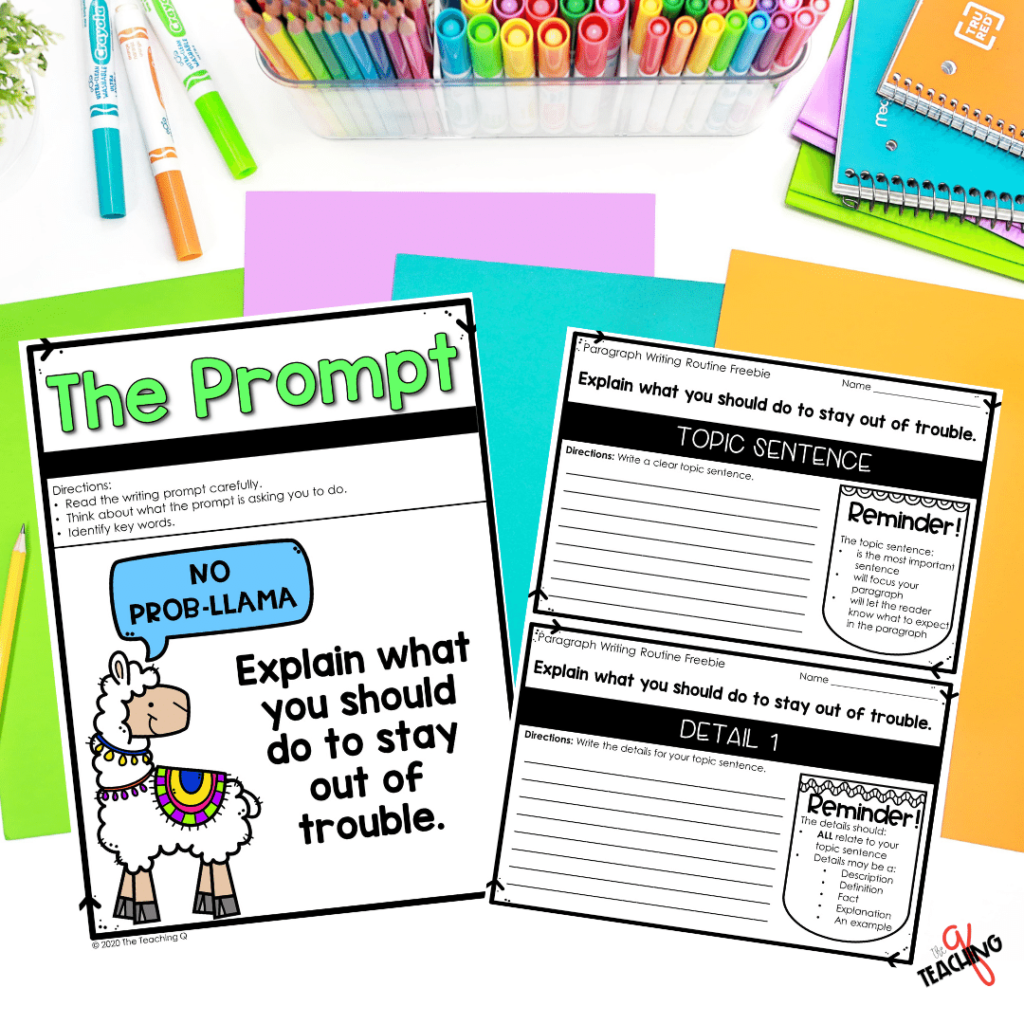
Step 3: Explain the parts of a paragraph.
Once your students understand the different types of paragraphs, it’s time to dive into the nitty-gritty details of how each type of paragraph is constructed. All paragraphs should include a topic sentence, supporting details, and a conclusion. These elements are key to our paragraph writing tips.
- Topic Sentence: This is the most important sentence in the paragraph. It states the main idea and introduces the reader to the topic.
- Supporting Details or Evidence: These sentences provide concrete evidence that supports the topic sentence and main idea.
- Transitions: These are words or phrases that connect one idea to another. They help the reader follow the flow of thought from one sentence to another and from one paragraph to another.
- Concluding Statement: This helps emphasize the main idea of the paragraph.
Step 4: Model how to write a paragraph.
The Most Essential of the Paragraph Writing Tips
Now that your students know all about paragraphs, it’s time for them to put their knowledge into practice by writing their own paragraphs! To help them get started, model how to write a paragraph yourself using one of the four types of paragraphs discussed in Step 2. As you write your paragraph, be sure to include a topic sentence and supporting details.
This is my favorite of the paragraph writing tips. Modeling solid writing skills and using explicit think-aloud as you model the writing is pure GOLD!
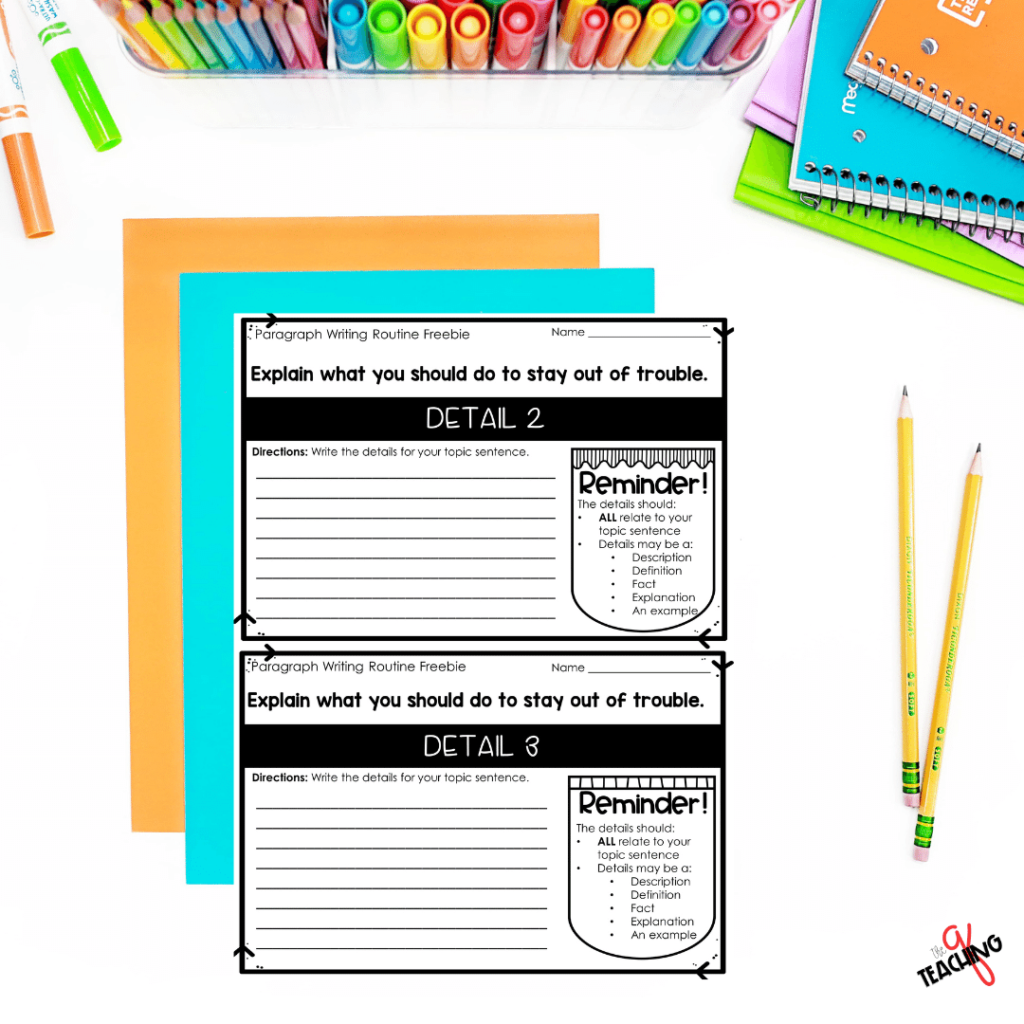
Step 5: Have students write their own paragraphs.
Once you’ve modeled how to write a paragraph for your students, it’s their turn to give it a try! Assign each student a type of paragraph to write (expository, narrative, persuasive, or descriptive) and give them some prompts to get them started (e.g., “Write about your best friend,” “Describe your favorite place,” etc.). If you want to take things one step further, have students exchange papers with a partner and have them revise and edit each other’s work using a peer editing checklist.
Did you know a Structured and Guided Paragraph Writing Routine is available in my TPT shop? Students write a small piece of paragraph each day. The worksheets include reminders so students are supported in their paragraph writing development. There are weekly paragraph writing prompts for each month of the school year. So you’ll always have engaging writing prompts for students to practice their paragraph writing skills.
This routine is great for lower elementary grades and for students who need extra support in paragraph writing. The routine can be used as a whole class activity, in small groups, or for individual practice.
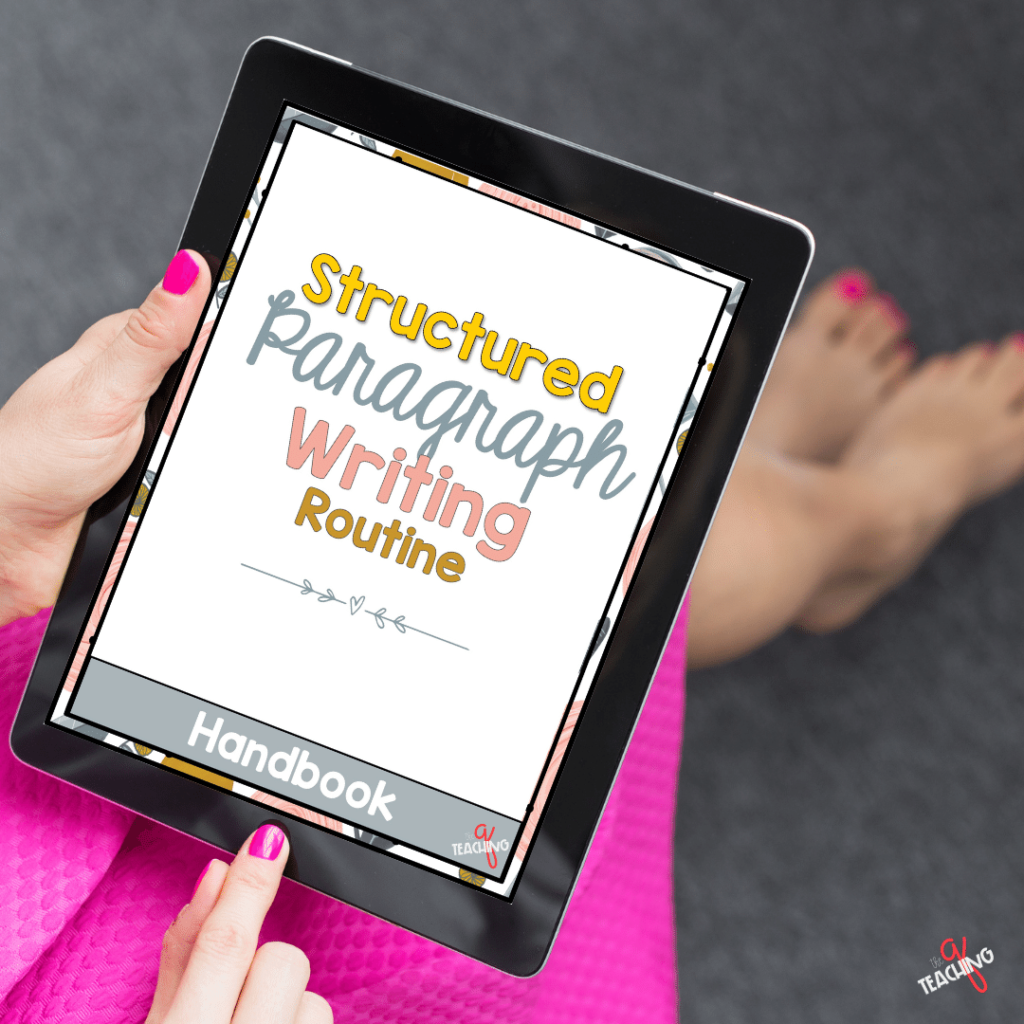
Step 6: Ready-to-go paragraph writing tips and materials.
Did you know that I have a ready-to-go Paragraph Writing Bundle for you? The Structured and Guided Paragraph Writing worksheets cover all the paragraph writing tips covered in this blog post. Each month includes four different writing prompts, one for each type of paragraph mentioned earlier. But best of all, students successfully write paragraphs because the routine walks them through each step, little by little.
It’s like the trainer wheels on a bicycle. Slowly but surely, the rider becomes more and more stable and independent. In no time at all, you’ll be letting go of the support and watching your little writers go!
Step 7: Final Paragraph Writing Tips: Publish student work.
Paragraphs are meant to be read by others (unlike diary entries), so encourage your students to share their work with classmates, family members, or even strangers! One way to do this is by creating an online class newspaper or blog where everyone can post their paragraphs for all to see. Alternatively, you could compile all of the student work into one class book that everyone can read and enjoy (and add to throughout the year).
To read 12 Creative Ways for Students to Share Their Writing, click this link to read the blog post.
These seven steps will turn even the most reluctant writers into confident experts when it comes time to put pen (or pencil)to paper (or screen). So what are you waiting for? Get started today and watch your students’ writing skills blossom before your very eyes!
Bonus Paragraph Writing Tips
- Following a routine is king. Just as with behaviors, establishing good routines is the key to success. That’s why I love and depend on the Weekly Paragraph Writing Prompts.
- Scaffolding instruction is queen. Grab my FREE Week of Paragraph Writing Routine to see how to scaffold instruction for student success!
Are your students struggling and making very little progress in writing? Or maybe they’re unmotivated or a reluctant writer? If so, I’ve got your back.
Yes…I…Do!
Let me share my secret sauce when it comes to teaching writing to elementary students.
It’s the Sentences, Paragraphs, and Essays: OH, MY! E-book.
Click this link to learn more about how the E-Book can transform your students’ chicken scratch, hap-hazard writing into strong, effective, glorious writing!
–Melissa


